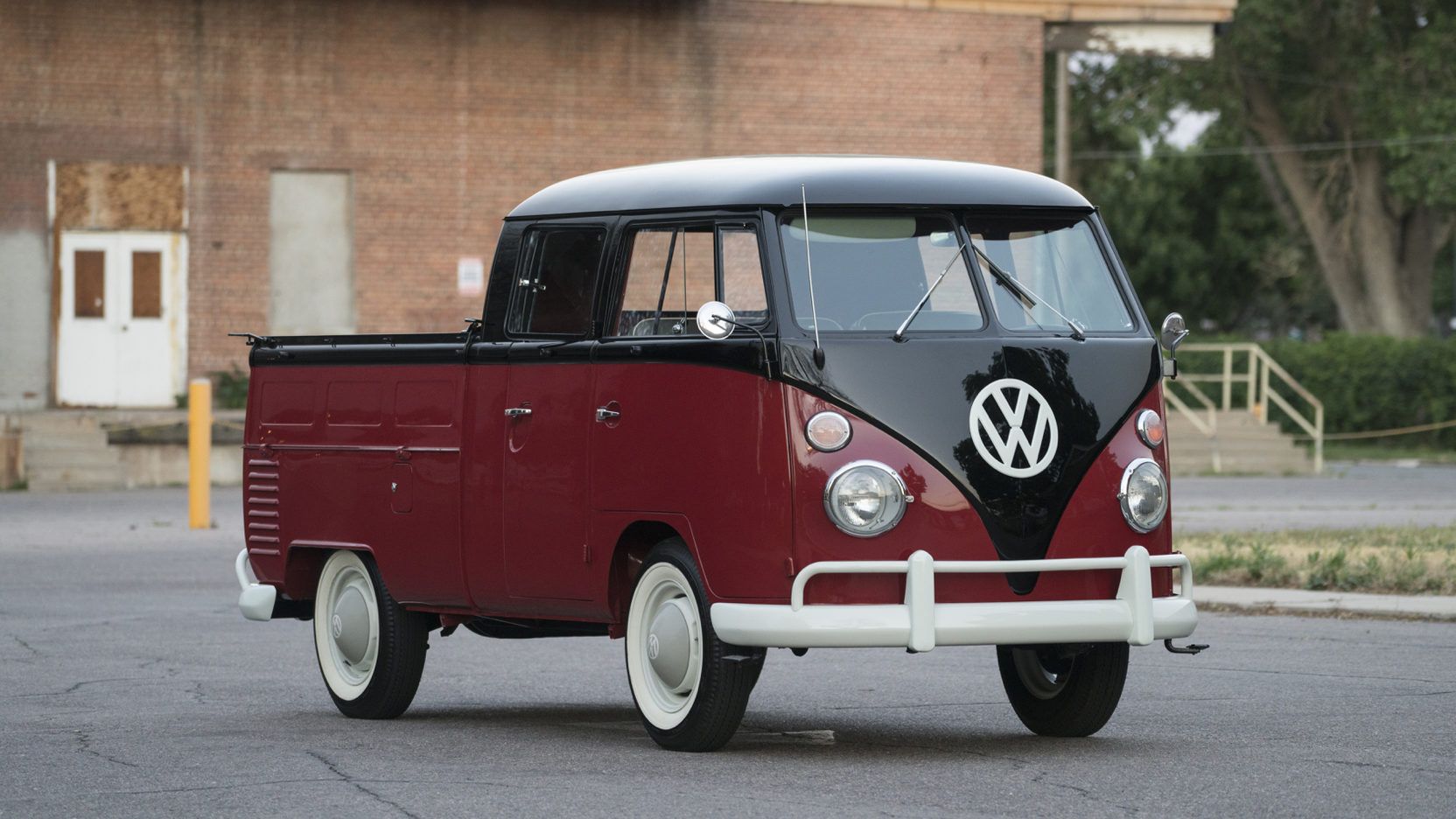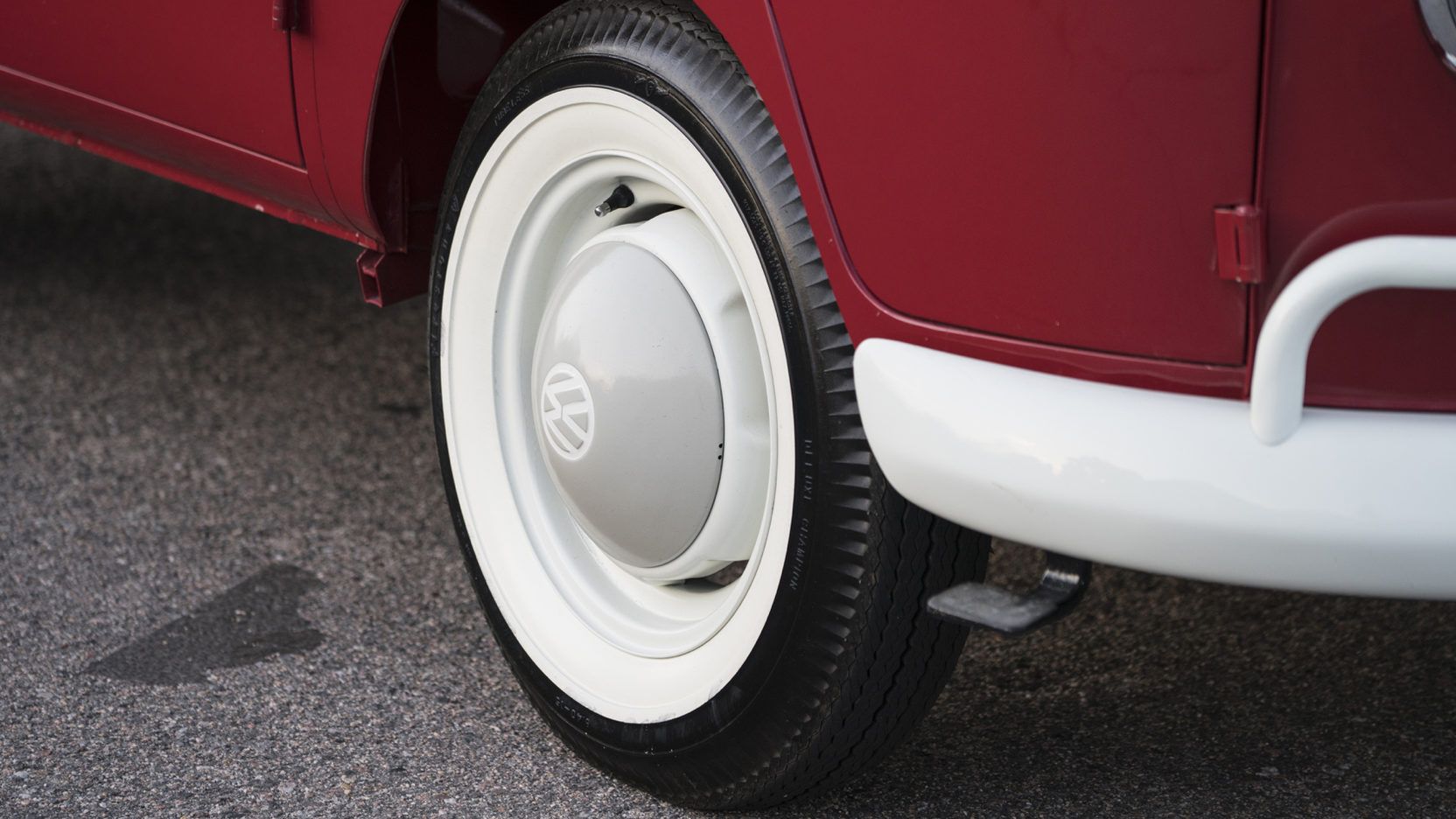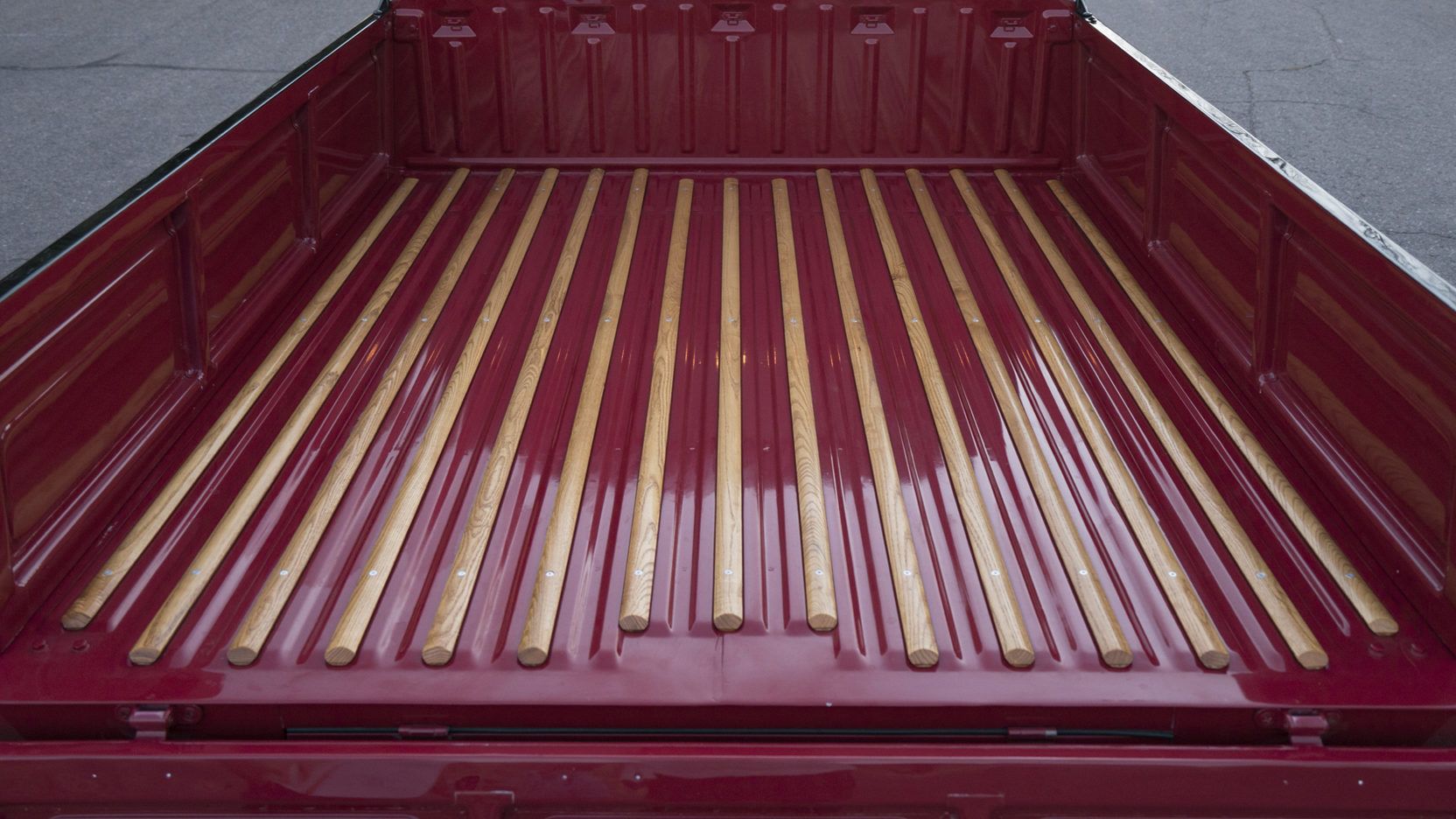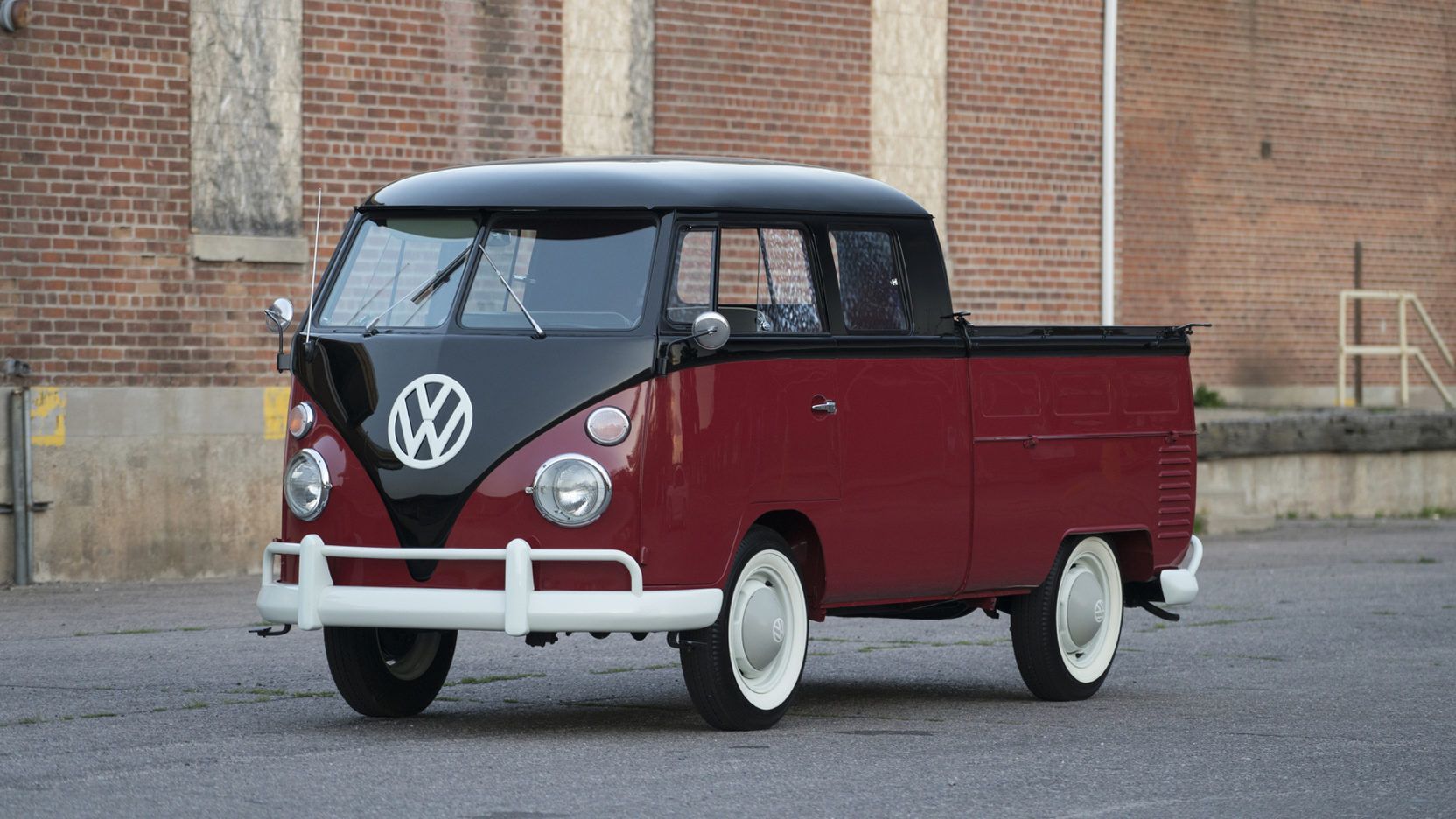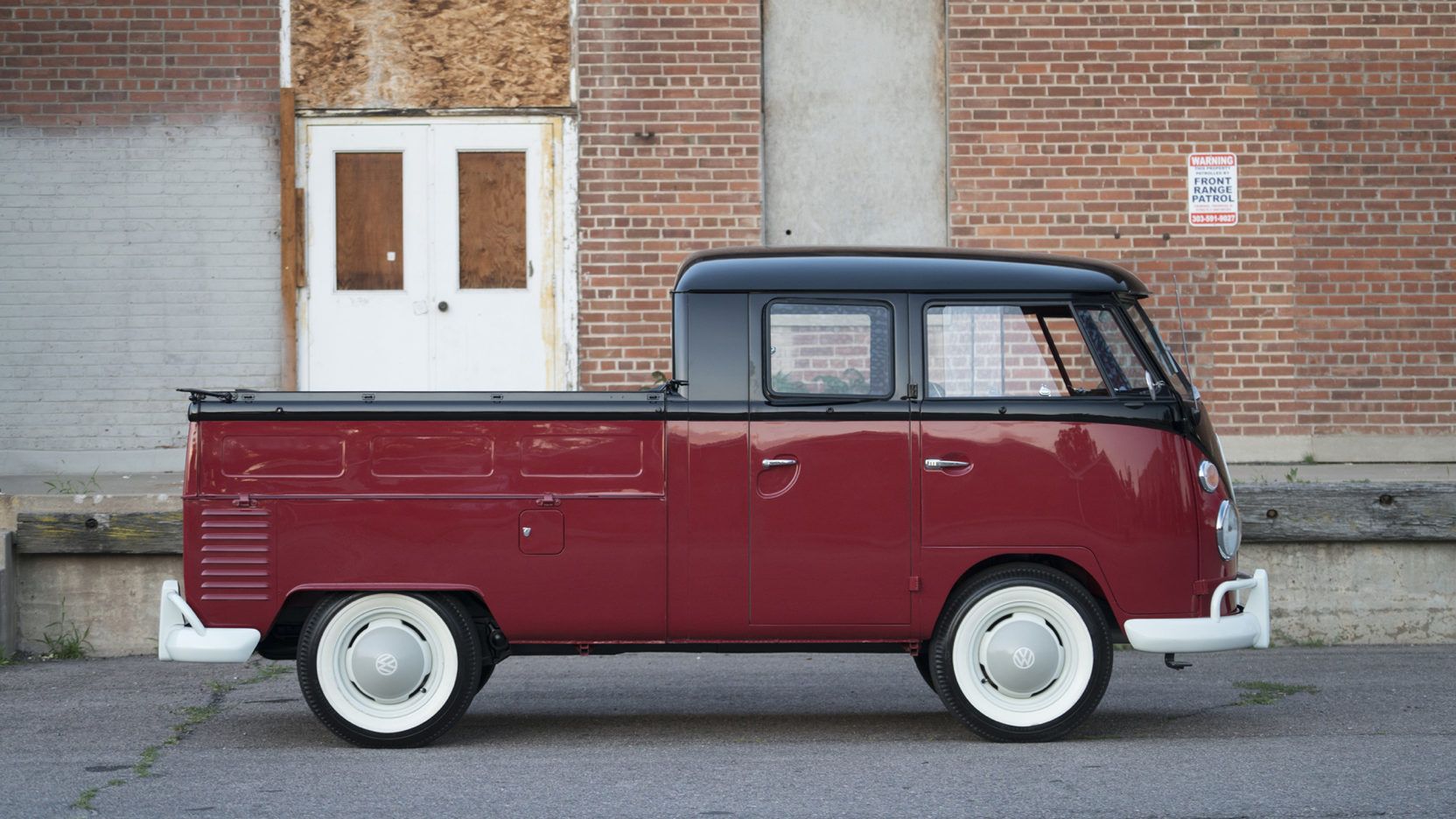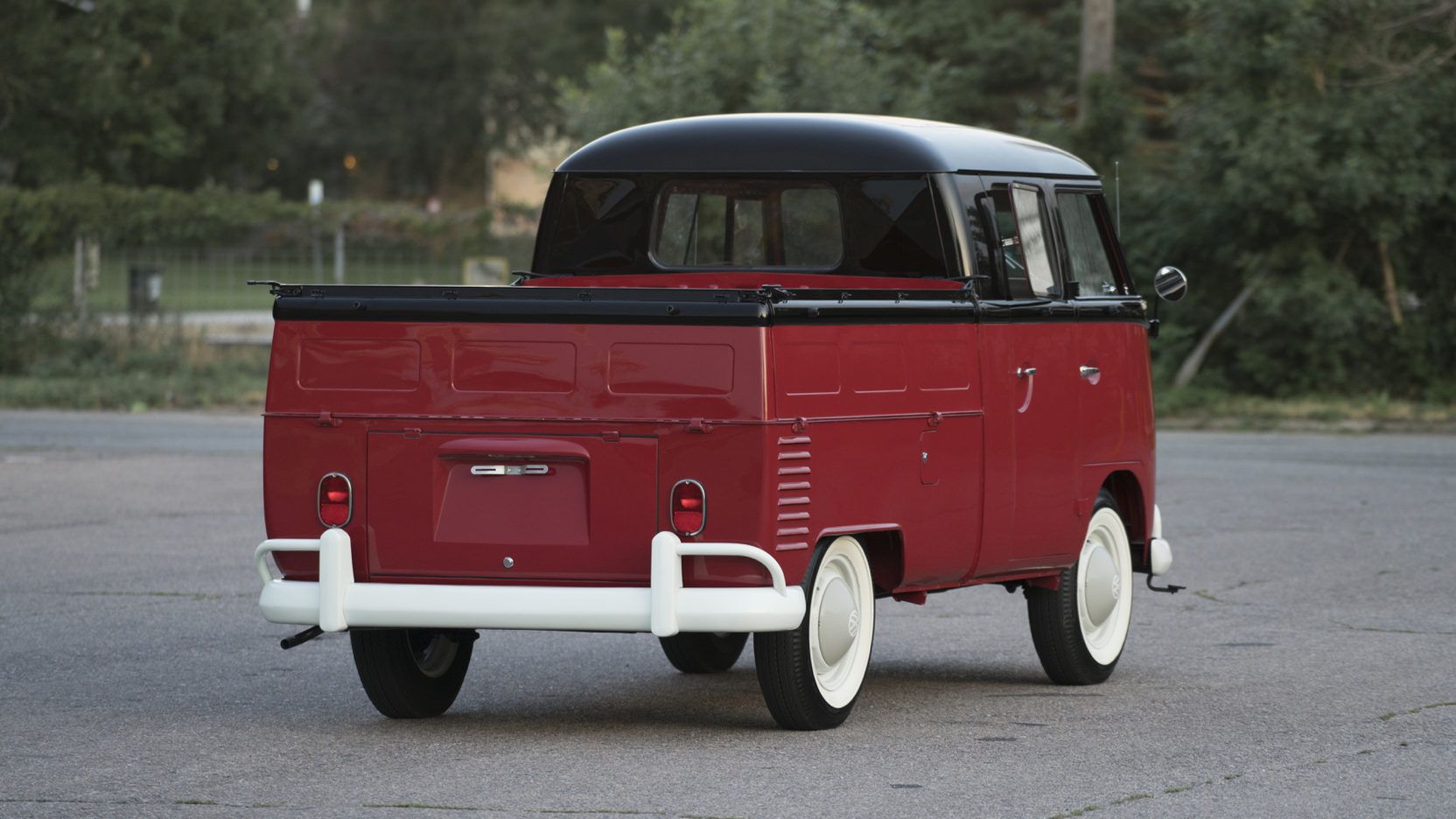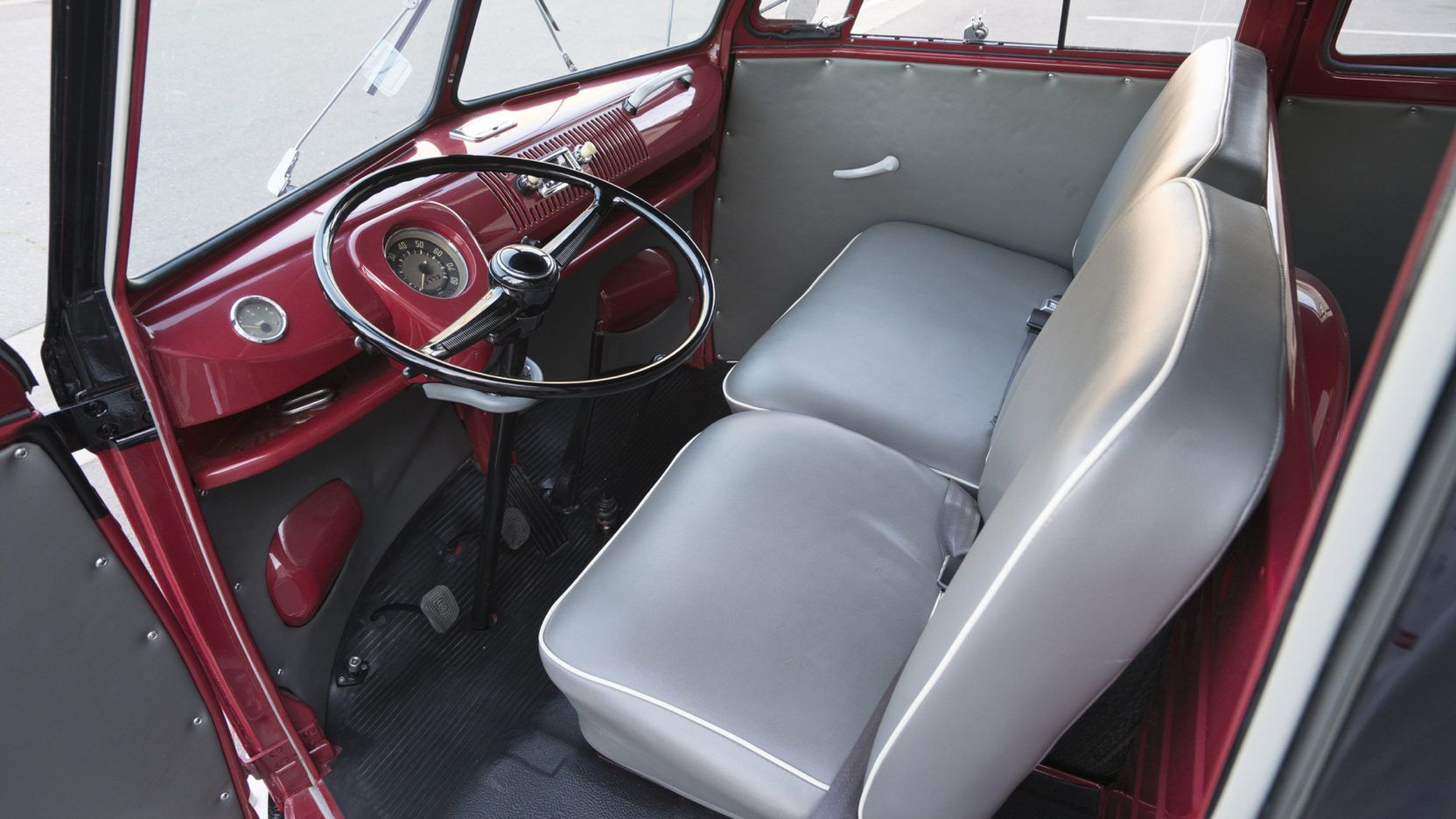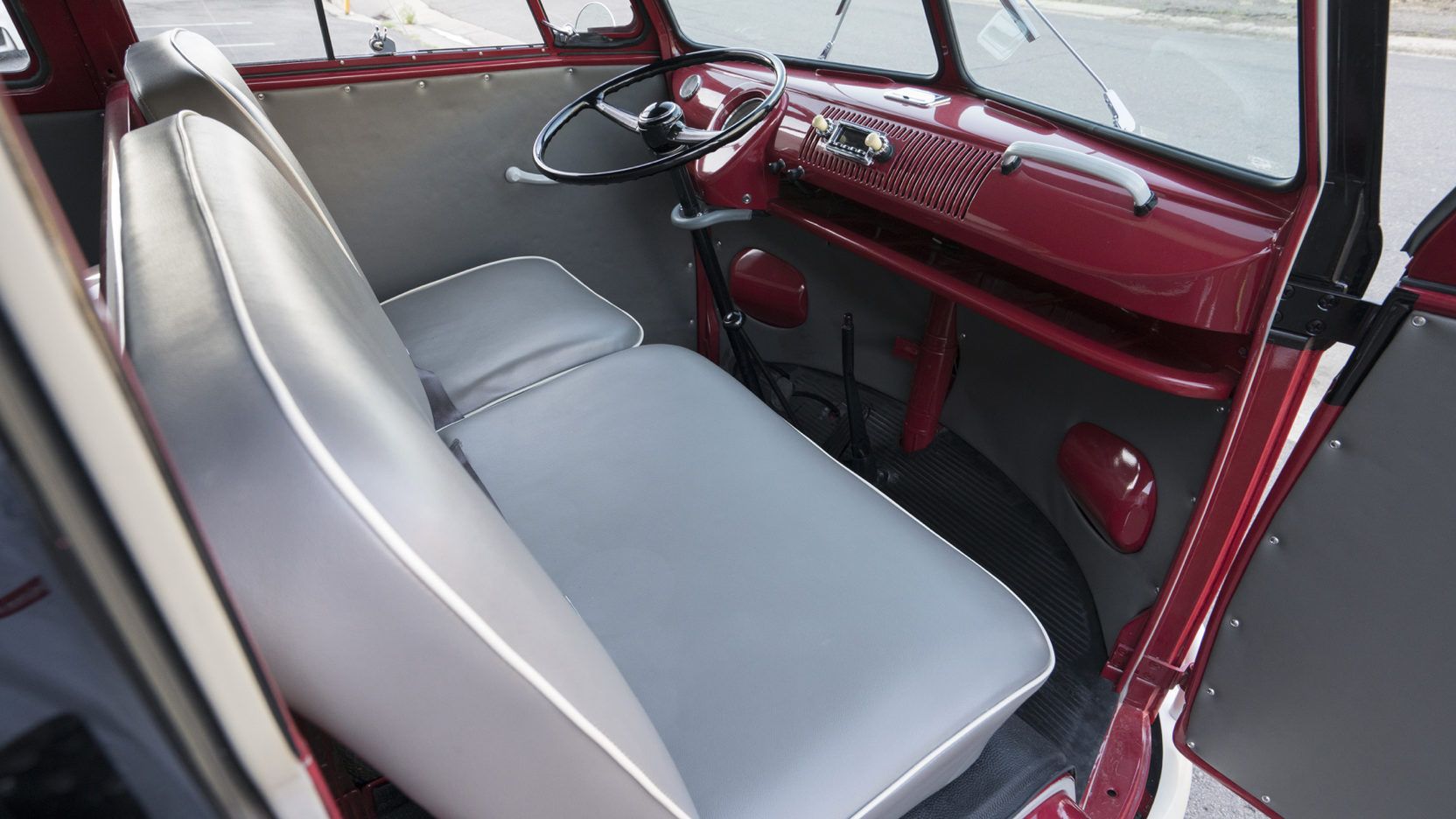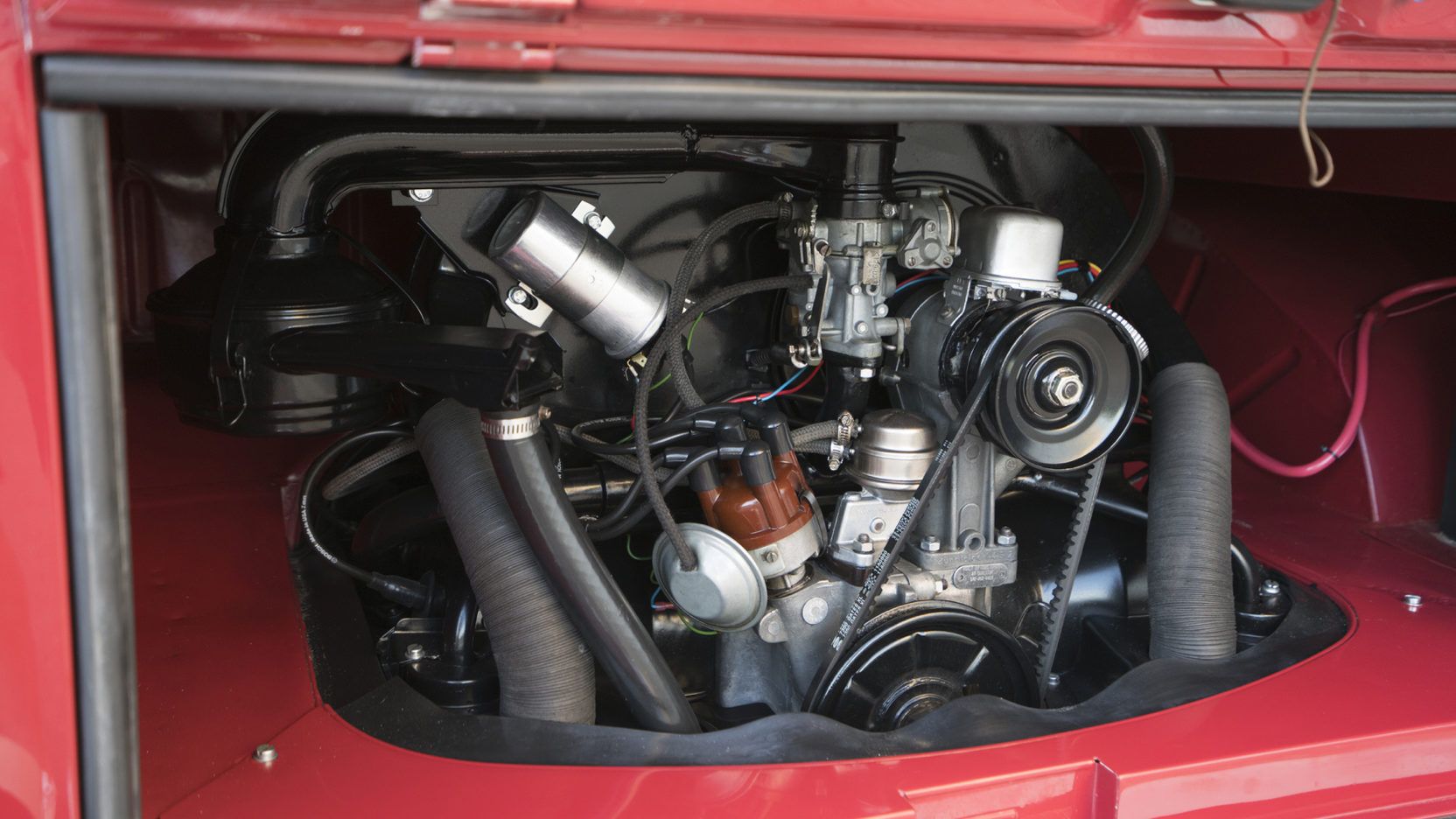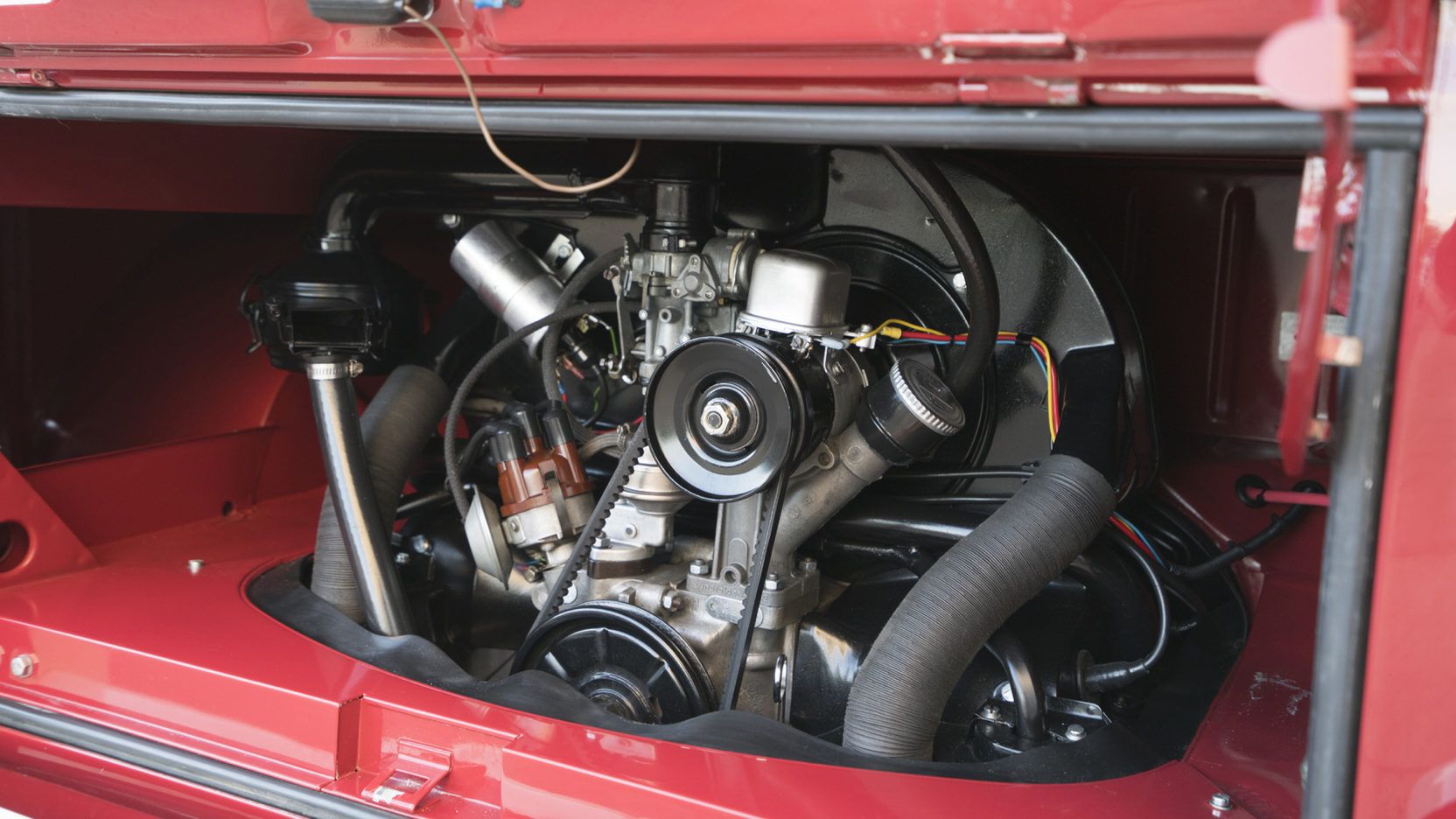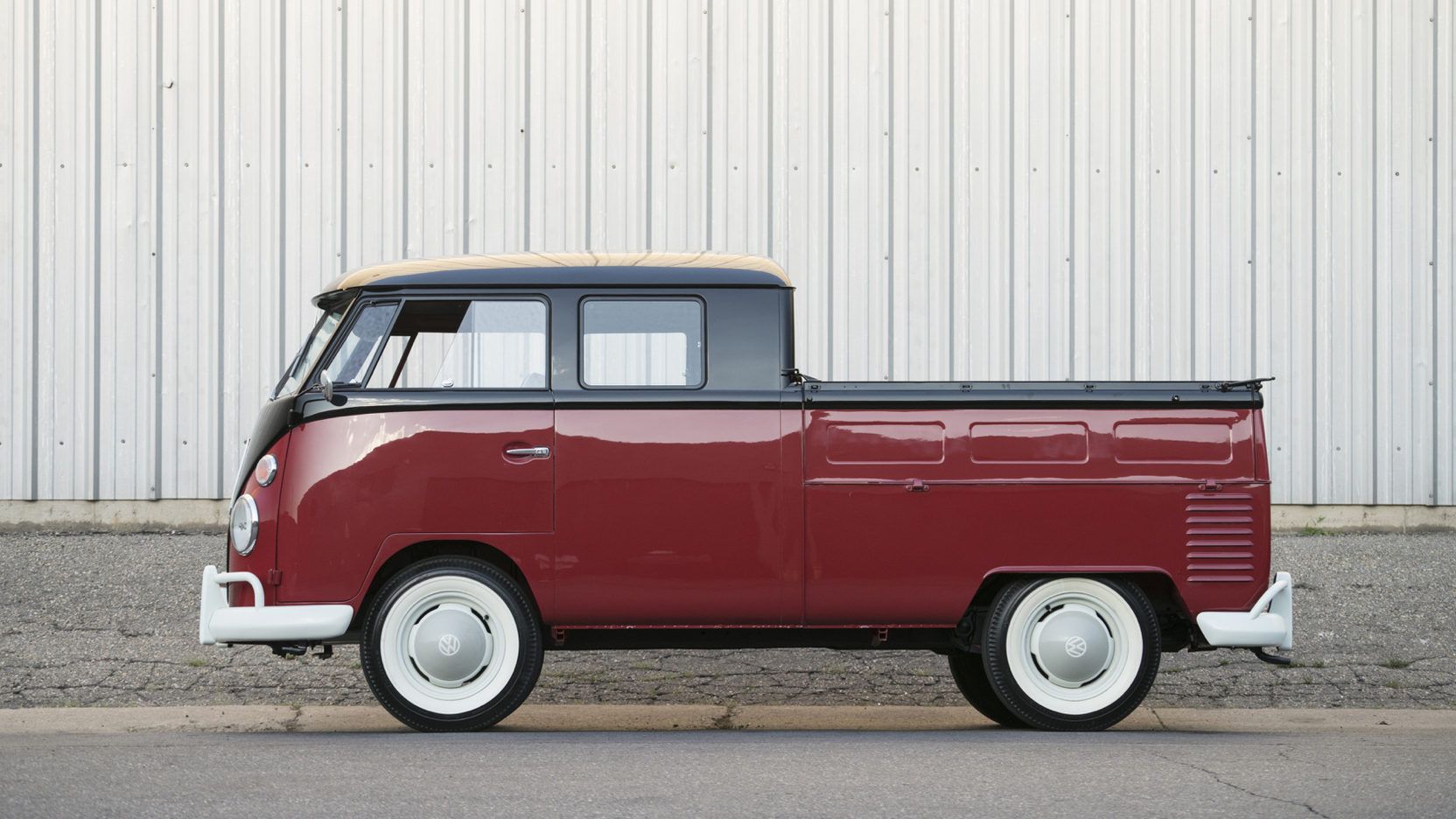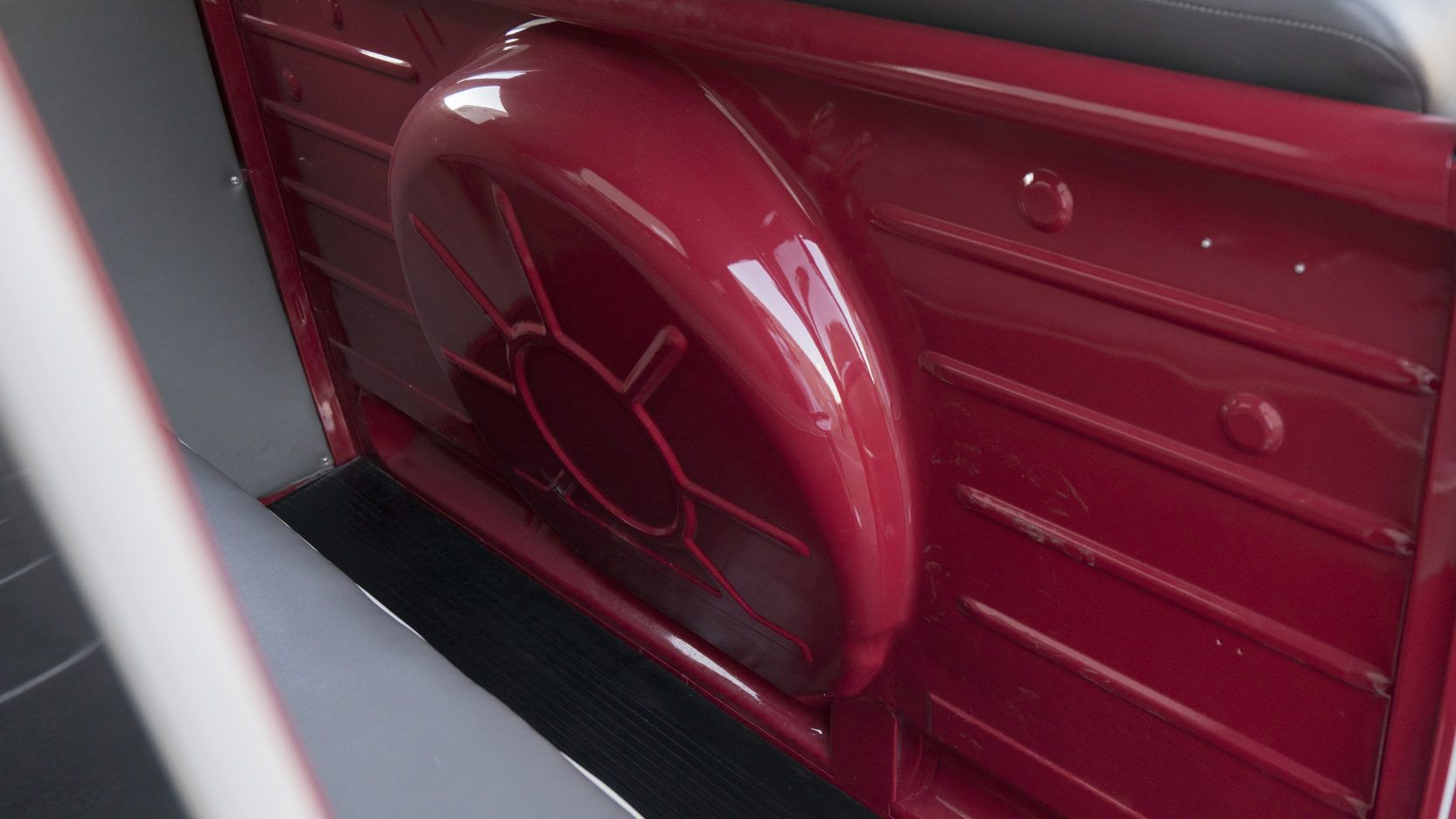Early Volkswagen products are immensely well known. Show a photo of the Type 1 Battle or Type 2 Microbus to any random stranger, and you’ll likely get correct answers. American culture in the 1960 and 70s catapulted the two Volkswagen products from mere transportation to cultural icons. Nevertheless, Volkswagen made several variations of the Microbus that aren’t nearly well known. This 1962 Double Cab Transporter is a prime example.
The Double Cab, or as it was known in Germany, the “doppelkabine,” got its start when Volkswagen discovered aftermarket companies creating double cab versions of the single cab Transporter. VW adopted the idea and began production for the 1959 model year. The enlarged passenger compartment offered room for six occupants. Like pickups in modern days, the extra cab space cut into the available bed space. Nevertheless, the Double Cab Transporter made perfect sense for construction crews, farmers, and of course, the occasional hippie.
The Double Cab Transporter was an innovative piece. Its chassis was shared with the original Microbus, including its rear-engine, rear-drive, forward cab architecture. Because of the rear engine design, the Transporter’s bed floor was raised, leaving room beneath for the drivetrain. This also made loading and unloading cargo a breeze, since the bed floor was at waist height. The Transporter’s bed walls were also hinged, allowing all three sides to fold flat against the body, making it a true flatbed truck.
Though the Volkswagen truck wasn’t overly popular, it did help create a lasting impact on global truck production and sales. It was in 1963 that President Lyndon B. Johnson imposed the 25 percent tariff known as the Chicken Tax. Among other things, the tariff was designed to protect U.S. automakers form overseas competition importing vehicles. This swiftly cut off the supply of VW Transport vans to the U.S. To this day the Chicken Tax still prevents automakers from importing foreign-built trucks to the States.
A pristine example of the Double Cab Transporter trucks recently cross the auction block at Mecum’s 2016 Monterey car week. Though it didn’t sell, Mecum estimated this fully restored truck would sell between $65,000 and $85,000.
Continue reading for our full review on the Volkswagen Double Cab Transporter.
1962 Volkswagen Double Cab Transporter
- Make: Array
- Model: 1962 Volkswagen Double Cab Transporter
- Horsepower: 48
- Transmission: Four-speed Manual
- [do not use] Vehicle Model: Array
Exterior
This beautiful example of Volkswagen’s Double Cab Transporter is painted in a red and black two-tone scheme, accenting the V-style shape of the front nose. The iconic front clips nearly identical to the conventional Microbus from the B-pillars forward, making this truck instantly recognizable. The massive VW logo probably helps too. White bumpers, white wheels, and white-wall tires give this Transporter a very classic look.
The Transporter’s functionality came with its cargo bed. The shallow cargo bed offered less vertical storage than its American counterparts, but because of its height realavite to the wheels, no wheel wells intruded the load space. This meant a flat load floor was possible. Furthermore, the load-in height was nearly waist high, making it incredibly easy to load and unload. The biggest innovation, however, are the folding bed walls. Each of the three walls are hinged to fold flat down along the VW’s body. Rubber bump-stops prevented paint damage. With all three sides folded, the Transporter was essentially a flatbed truck. No other vehicle in the industry had anything to compete with its unique capabilities.
Access to the 1.6-liter flat four-cylinder was done at the rear, just like in the standard van-style Microbus.
Interior
The interior is about as spartan as it gets. The VW features a typical driving position for a forward-control vehicle, with the steering wheel angled nearly flat and the driver sitting very close to the windshield. It might be a death trap, but the VW offers outstanding visibility and maneuverability in congested city centers.
The dashboard is painted the same dark red as the exterior. It boasts a simple AM radio with volume and tuning knobs. The front passenger gets a grab handle and the driver gets a speedometer and fuel gauge. A small shelf rides just below the dash for items like cigarettes, beaded necklaces, flowers, and bandanas.
The Transporter’s manual transmission shifter rises from the floor, as do the three pedals and parking brake lever. A high-beam dimmer switch is even present, positioned to the left of the clutch, just as most vehicles back then had them. And while seatbelts weren’t standard equipment, lap belts were added during the restoration process for additional safety.
The grey vinyl seats are close to the original design, but the vinyl door panels are a restoration upgrade from the hard cardboard panels originally fitted to the doors. it’s clear to see that automotive interiors have come a long way in the past 50 years.
Drivetrain
Powering this Transporter example is Volkswagen’s venerable 1.6-liter flat four-cylinder. Though larger, it was similar to the engine found in the Beetle. This Boxer-style engine features cast-iron cylinders, cast aluminum alloy heads and pistons, a magnesium crankcase, and a forged steel crankshaft and connecting rods. Built stout, the little engine was bullet proof, but only produced roughly 48 horsepower.
A four-speed manual transmission managed what power was on hand, making the most of it. The rear-mounted powertrain necessitated the transmission be a transaxle as well, so the differential and output shafts are mounted within the transmission’s casing.
Prices
This Double Cab Transporter didn’t find a new home when it crossed the auction block at Monterey. There’s not doubt, however, it will definitely live on to sell another day. Mecum estimated the truck would have sold for between $65,000 and $85,000. The Concours-level restoration, service records dating back to 1962, and the original owner’s manual justify that price.
Conclusion
This pristine example of early 1960s Volkswagen goes to show that even economy cars and utilitarian transports can one day become expensive collectables. Not only does this van-turned-truck have the “look” made famous by pop culture, but it also has the functionality of a pickup and the rarity of a limited-edition model. That’s what makes this vehicle so special. It ticks nearly every box for the classic car collector. While it’s surprising it didn’t sell at Monterey, its unquestionable that this VW will see a future of rising value and increasing collectability.

